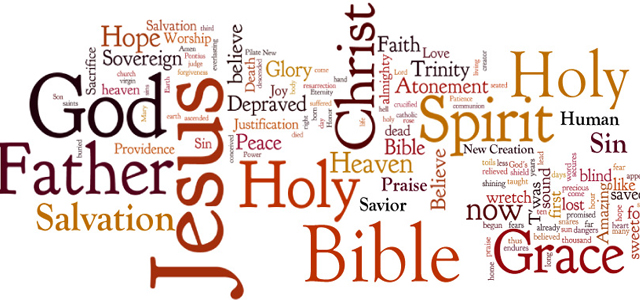When Jesus died, something happened in human history that changed everything. Jesus’ earliest followers had many different ways of describing the meaning of that mysterious event. Most of these descriptions are paradoxical. They are expressions of astonishment, not straightforward doctrinal explanations.
Through his shameful death, Jesus attains the highest honour (Phil 2:6-11). By succumbing to corruptibility Jesus makes human nature incorruptible (1 Cor 15). His death is the offer of true life to our world (Rom 5:12-21). It is an impoverishment that brings riches (1 Cor 1:25); a curse that brings blessing (Gal 3:6-14); a weakness that brings strength (2 Cor 13:4); an identification with sin that creates a new order of righteousness (2 Cor 5:21). Jesus’ death is the darkness that illuminates, the judgment that does not condemn (John). It is a violent catastrophe that triumphs over all the violence of human history (The Book of Revelation).
Each of these paradoxes points to the central mystery of faith: the brute fact of Jesus’ death. The meaning of that fact is inexhaustible. No matter how much we say about it, we only will be scratching the surface. In Christology we are always beginners.
In the Church’s early centuries, Christian pastors and teachers tended to describe Jesus’ death as a form of solidarity with human nature. We are mortal. Our nature is marked off by the two limits of birth and death, the womb and the tomb. It is impossible to be human without making contact with both of these limits. Jesus shared the full experience of our humanity. He was born so that he could meet us in our infancy. And he willingly faced death in order to meet us there too.
The fourth-century Cappadocian writer Gregory of Nyssa put it like this: “[Jesus’] birth makes his death necessary. He who had decided to share our humanity had to experience all that belongs to our nature…. Our whole nature had to be brought back from death. Thus he stooped down to our dead body and stretched out a hand when we lay prostrate. He approached so near death as to come into contact with it.”
One of the great convictions of the early Christians was that death itself had been changed because of Jesus’ death. Jesus’ followers adopted a completely new attitude towards death. Because of Jesus, death was no longer seen as a defeat; dying could become a kind of victory. That is what the martyrs showed when they loved Jesus’ death more than their own lives.
In a discussion of the Christian martyrs, the 4th Century Egyptian pastor Athanasius wrote: “If you see children playing with a lion, don’t you know that the lion must be either dead or completely powerless? In the same way, when you see Christ’s believers playing with death and despising it, there cannot be any doubt that death has been destroyed by Christ and that its corruption has been brought to an end?” (Athanasius, On the Incarnation). When Jesus died, death died too. The martyr is the proof.
Because of Jesus’ death, believers die differently. Our dying can become another way of following Jesus and of identifying with him. We die differently because we know that “neither death nor life… will be able to separate us from the love of God in Christ Jesus our Lord” (Rom 8:38-39). We die differently because Jesus has touched death. He has gone there ahead of us. He waits for us there, the Lord of life, just as he waits for us at all life’s crossroads, at the beginnings and ends of all our ways.
Ben Myers is Lecturer in Systematic Theology at United Theological College













